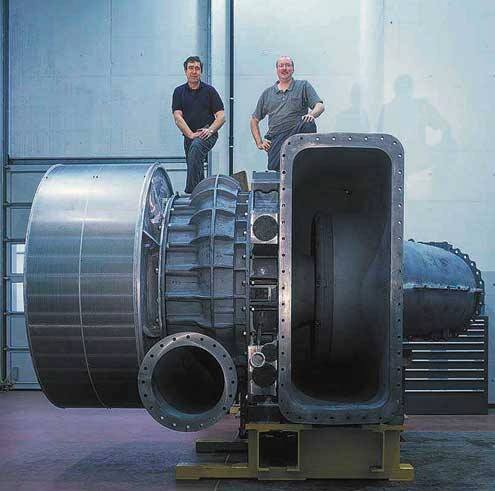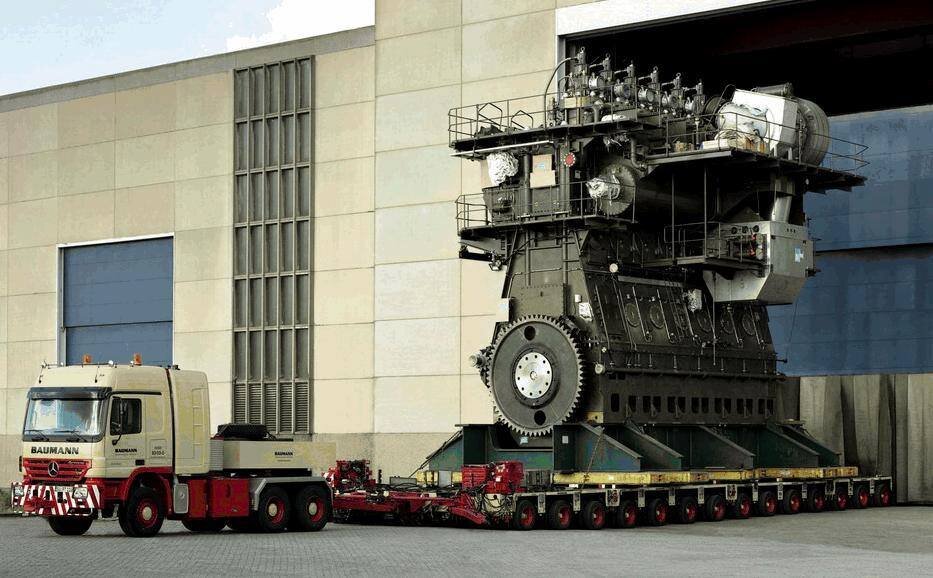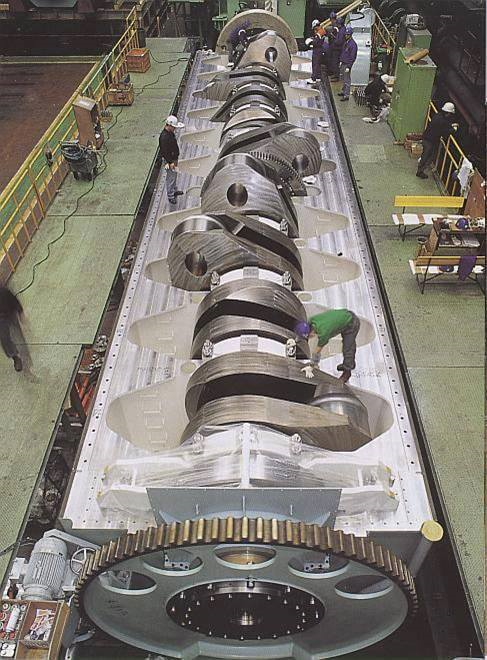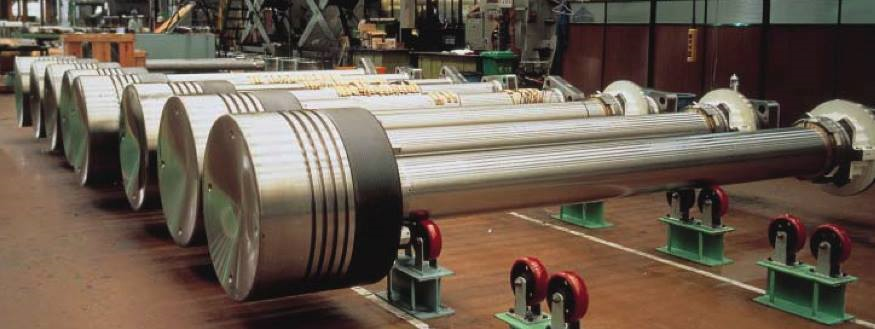Don't like the adverts? Click here to remove them
You are using an out of date browser. It may not display this or other websites correctly.
You should upgrade or use an alternative browser.
You should upgrade or use an alternative browser.
Marine Engine
- Thread starter Chas
- Start date
Yep I love it, I was promised by my bruv in laws father who designs and has to oversee the installation of marine engines, not happened yet  . Just never got to visit my BIL and sister who live in Cyprus. A great job that is for sure, apparently it is not uncommon to scrap a ship if the engine seriously fails? Something to do with the amount of the ship that has to be cut off just to get to remove the engine.
. Just never got to visit my BIL and sister who live in Cyprus. A great job that is for sure, apparently it is not uncommon to scrap a ship if the engine seriously fails? Something to do with the amount of the ship that has to be cut off just to get to remove the engine.
regards
Dave
regards
Dave
Towpack
Well-Known Member
Probably a Wartsila engine of some description? These huge diesel engines are some of the most efficient IC engines on the planet. I'm guessing they are started by compressed air rather than an oversized electric motor?
- Joined
- Feb 2, 2013
- Messages
- 16,328
Don't like the adverts? Click here to remove them
- Joined
- Mar 1, 2010
- Messages
- 5,524
The engine in the pic is straight 8 with 9 main bearings. How do the pistons work as there is no visible pivot point?
The engine in the pic is straight 8 with 9 main bearings. How do the pistons work as there is no visible pivot point?
I wondered that myself Frank.
These big marine engines have a slide a bit like the old steam engines had called a crosshead. It takes up any rotating movement of the piston around a gudgeon pin as this then is connected to the con rod at a point between the piston and the crank.
As shown here
https://www.google.co.uk/search?q=s...n-gb&q=crosshead+piston&imgrc=8znnZhr_Ml09_M:
As shown here
https://www.google.co.uk/search?q=s...n-gb&q=crosshead+piston&imgrc=8znnZhr_Ml09_M:
Last edited:
As a lad, we used the IOW car ferry twice a year to visit my grandparents on the island, and many's the time I'd wait by the engine room door to catch a glimpse at the engines when one of the fitters would enter or leave.
A few times they would invite me in, only as far as the top of the expanded metal steps down into the engine room but close enough to see, smell and hear those monster engines in operation under full steam!
Quite small I'd imagine compared with an ocean going liner, but awesome to me as a nosy kid.
A few times they would invite me in, only as far as the top of the expanded metal steps down into the engine room but close enough to see, smell and hear those monster engines in operation under full steam!
Quite small I'd imagine compared with an ocean going liner, but awesome to me as a nosy kid.
I did a trip from Tower Bridge to Tilbury on the SS Waverley, which I think is the only seagoing paddle steamer in the world and there are observation windows where you can watch the engines in all their glory thrashing away. I think she was one of the Dunkirk rescue ships.
http://www.waverleyexcursions.co.uk/
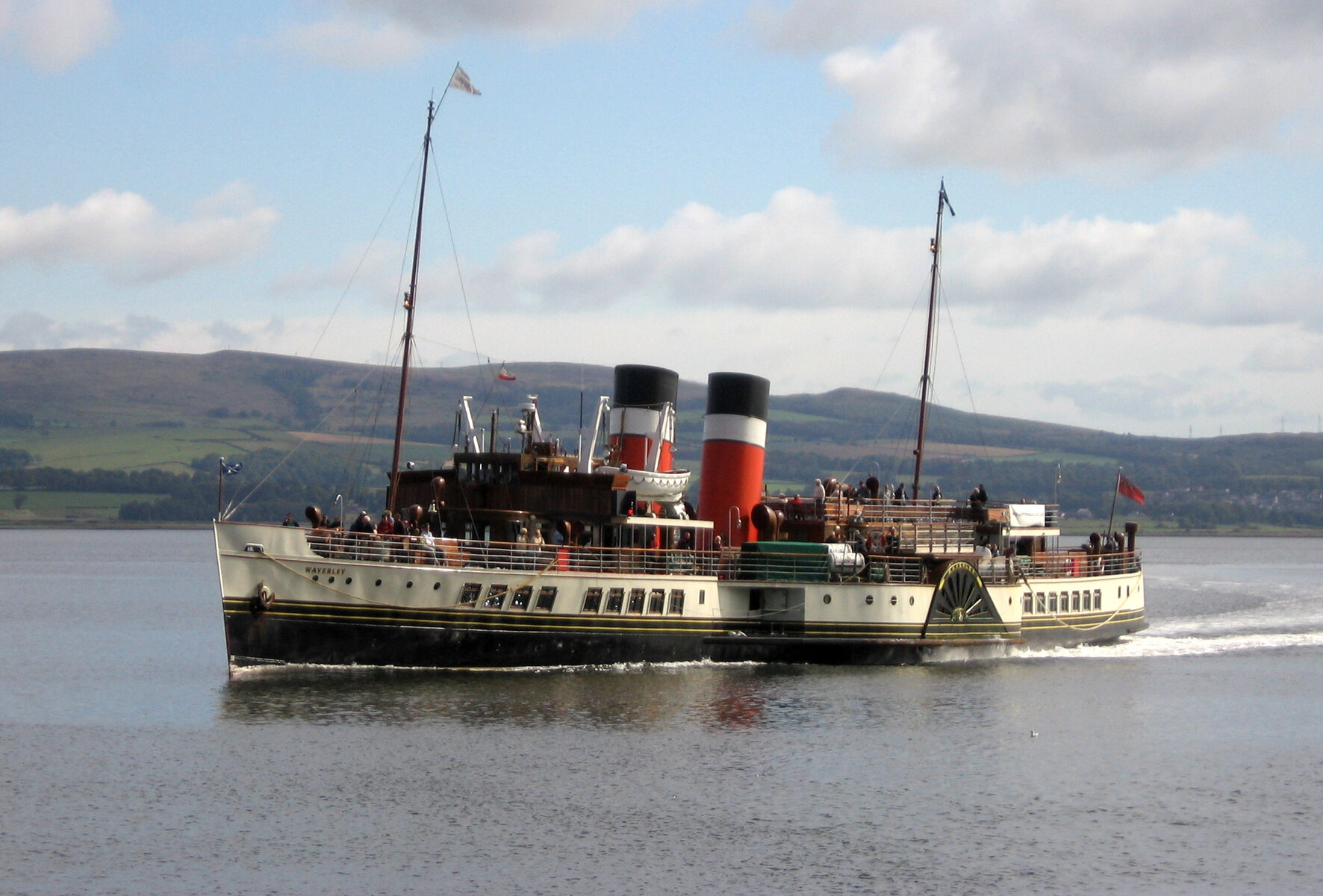
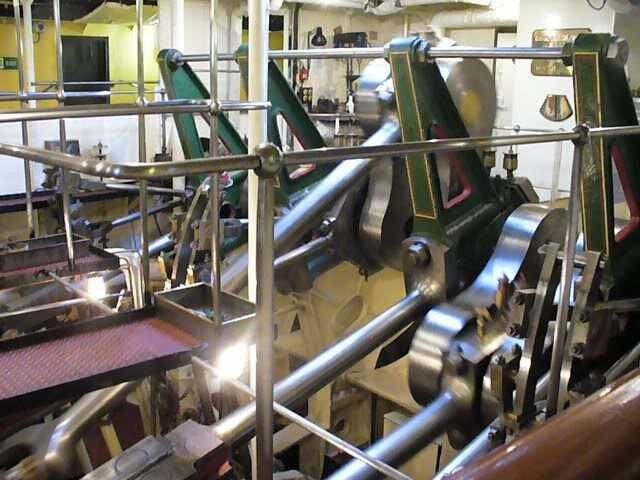
http://www.waverleyexcursions.co.uk/


I did a trip from Tower Bridge to Tilbury on the SS Waverley, which I think is the only seagoing paddle steamer in the world and there are observation windows where you can watch the engines in all their glory thrashing away. I think she was one of the Dunkirk rescue ships.
http://www.waverleyexcursions.co.uk/
View attachment 25434
What a beautiful boat! Mechanical heaven....
(I don't know when a boat becomes a ship
 )
)Here you are Clive,
The determining factors that distinguish boats from ships has evolved over time. The term "ship" formerly referred to a sailing vessel having three or more masts. In modern times, however, a ship is usually a vessel of more than 500 tons of displacement. Displacement tonnage is a way to measure a ship's capacity.
No not me showing what I know about boats (would not cover the back of a stamp), but I did a Google for you mate.
regards
Dave
The determining factors that distinguish boats from ships has evolved over time. The term "ship" formerly referred to a sailing vessel having three or more masts. In modern times, however, a ship is usually a vessel of more than 500 tons of displacement. Displacement tonnage is a way to measure a ship's capacity.
No not me showing what I know about boats (would not cover the back of a stamp), but I did a Google for you mate.
regards
Dave
Thanks Dave & Chas.
I know very little about ships either, but I did a lot of sailing in small dinghies as a boy and late teenager.
When 17 or 18, I used to tow a mirror dinghy with my A30 when me and my mate used to go up to Ullswater every October camping. We'd wake up with frost on the tent, sail on the lake all day, and in the evening drink ourselves stupid playing dominoes with the locals in the Pooley Bridge Inn (I think that's what it was called).
One old boy we used to buy beer for used to be a pilot on the steamers, and once he gave us a freebie on one of the boats. Can't remember whether it was the 'Raven' or the 'Lady of the Lake' but they weren't paddle steamers IIRC.
I think they used to run from Glenridding to Pooley Bridge, and Ruben (one of the pilots) used to warn us of the currents on the lake, he said many swimmers had drowned because of very strong undercurrents which were invisible, and "they'll pull you straight down, life jacket an all" using his words.
quick edit...
found this browsing, surprised me that the steamer company still seems to be in business...
The Raven
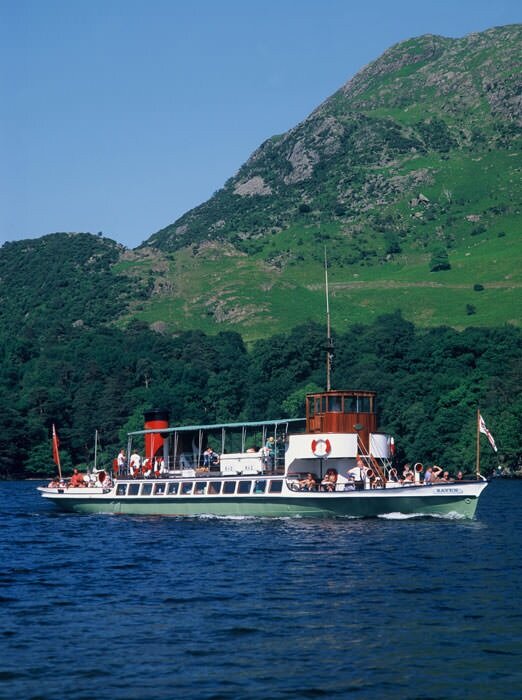
I know very little about ships either, but I did a lot of sailing in small dinghies as a boy and late teenager.
When 17 or 18, I used to tow a mirror dinghy with my A30 when me and my mate used to go up to Ullswater every October camping. We'd wake up with frost on the tent, sail on the lake all day, and in the evening drink ourselves stupid playing dominoes with the locals in the Pooley Bridge Inn (I think that's what it was called).
One old boy we used to buy beer for used to be a pilot on the steamers, and once he gave us a freebie on one of the boats. Can't remember whether it was the 'Raven' or the 'Lady of the Lake' but they weren't paddle steamers IIRC.
I think they used to run from Glenridding to Pooley Bridge, and Ruben (one of the pilots) used to warn us of the currents on the lake, he said many swimmers had drowned because of very strong undercurrents which were invisible, and "they'll pull you straight down, life jacket an all" using his words.
quick edit...
found this browsing, surprised me that the steamer company still seems to be in business...
The Raven

Last edited:
Graham
Well-Known Member
That may look like a Sulzer or BW.
Spent many a day in the crank case, doing bearing leads.
Taking off a bearing cap from a piston rod, and fitting strips of lead, the tightening the bearing cap back down.
Then opening it up again to measure the thickness of the leads.
2 stroke ,with exhaust scavange ports, the Sulzers had a beautiful rotary exhaust valve arrangement.
They typically run at 120 RPM full speed, and yes, started with a kick of compressed air, via an air distributor.
FOR'd or astern, make no difference, however, generally easier to start in astern, as the prop was not as efficient is astern, so less water to move.
These are crank shaft, directly coupled to the propeller shaft.
Many of the slow speed diesels had a cylinder bore diameter of 1,10 M and a stroke of 3 meters, it was interesting to lift the cylinder heads, (individual) then use a ladder to get down the the piston crown
Oh the good days..................
Typically 170,000 HP, all mine !
Spent many a day in the crank case, doing bearing leads.
Taking off a bearing cap from a piston rod, and fitting strips of lead, the tightening the bearing cap back down.
Then opening it up again to measure the thickness of the leads.
2 stroke ,with exhaust scavange ports, the Sulzers had a beautiful rotary exhaust valve arrangement.
They typically run at 120 RPM full speed, and yes, started with a kick of compressed air, via an air distributor.
FOR'd or astern, make no difference, however, generally easier to start in astern, as the prop was not as efficient is astern, so less water to move.
These are crank shaft, directly coupled to the propeller shaft.
Many of the slow speed diesels had a cylinder bore diameter of 1,10 M and a stroke of 3 meters, it was interesting to lift the cylinder heads, (individual) then use a ladder to get down the the piston crown
Oh the good days..................
Typically 170,000 HP, all mine !
Last edited:
Graham
Well-Known Member
These big marine engines have a slide a bit like the old steam engines had called a crosshead. It takes up any rotating movement of the piston around a gudgeon pin as this then is connected to the con rod at a point between the piston and the crank.
As shown here
https://www.google.co.uk/search?q=s...n-gb&q=crosshead+piston&imgrc=8znnZhr_Ml09_M:
Yes, piston rod is bolted rigid to underside of piston, then the cross head, which is actually a pivoting knuckle, which is then fastened to the con rod.
I used to work on many 5 cylinder Sulzers, and 6 cylinder BW, not forgetting the opposed piston Doxford's
All huge engines,
That may look like a Sulzer or BW.
Spent many a day in the crank case, doing bearing leads.
Taking off a bearing cap from a piston rod, and fitting strips of lead, the tightening the bearing cap back down.
Then opening it up again to measure the thickness of the leads.
They typically run at 120 RPM full speed, and yes, started with a kick of compressed air, via an air distributor.
FOR'd or astern, make no difference, however, generally easier to start in astern, as the prop was not as efficient is astern, so less water to move.
These are crank shaft, directly coupled to the propeller shaft.
Many of the slow speed diesels had a cylinder bore diameter of 1,10 M and a stroke of 3 meters, it was interesting to lift the cylinder heads, (individual) then use a ladder to get down the the piston crown
Oh the good days..................
Typically 170,000 HP, all mine !
Wow, that's great Gra, the parts must have weighed tons!
My fathers old 1947 Morris Commercial PV van used to have white metalled mains and big ends journals, with no shells.
He spent all winter once, running 'solder' onto the journals with a blow-torch, then pearing them down to tolerance using blue paste to show where the high spots were.
I can't imagine a bore size of over a metre, that's incredible.
The opposed piston engines that Graham mentions were widely used in the German Junkers aeroplanes of the 30's and 40's and were necessarily supercharged for efficient scavenging. The Napier Deltic was a derivation of that engine, all very much smaller than any marine incarnation, but all incredibly simple as they involved no valves but were two strokes uncovering ports with each opposed piston.
Similar threads
- Replies
- 1
- Views
- 215



